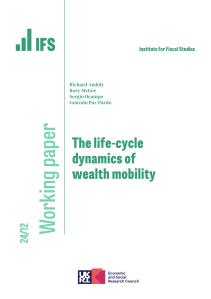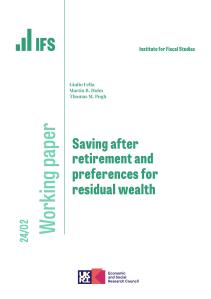Segal’s law tells us that a man with one watch knows what time it is. A man with two watches is never sure.
When it comes to knowing what’s happening to inflation we are like a man with three watches. The UK Statistics Authority publishes three headline inflation measures every month. One is the Consumer Price Index, the CPI, which is the measure targeted by the Bank of England and the measure generally reported by the media. A version of it, CPIH, takes account of owner occupiers’ housing costs and is the one that the statisticians would like us to use. But it is of relatively recent vintage and hasn’t really caught on yet.
The third is the Retail Price Index, the RPI. This is much the most venerable of the measures, with a heritage dating back many decades. It is used by the government in calculating repayments on student loans, for increasing rail fares, and most importantly as the inflation measure which determines the returns on index linked gilts. It is also used extensively as the basis for annual increases to private sector occupational pensions in payment. Unfortunately it is wrong. This watch is almost always fast. There is a mistake in the way it is constructed. This mistake started to have a bigger effect after 2010—the watch got faster. Before 2010 the RPI ran at about 0.5 per cent above the CPI on average. Since then it has been running about 0.8 per cent a year above the CPI. That additional gap reflects an error in the RPI.
Don’t take my word for it. The UK Statistics Authority itself has said that the RPI is flawed, stripped it of its National Statistics kitemark, and encouraged users to move away from it. Yet they continue to publish it. Not surprisingly this has drawn some criticism. Most recently the House of Lords economic affairs committee published a sharply critical report suggesting that the flaws be corrected. The chair of that committee Lord Forsyth joined forces with Nicky Morgan, chair of the Treasury Select Committee, in writing to the Statistics Authority to say that its position of maintaining the current RPI as a “legacy measure” is untenable.
The problem arises right in the bowels of the calculation process. The RPI has probably always been upwardly biased. The issue though was exacerbated by a change in the way that clothing prices were collected back in 2010. This caused the upward bias to increase by at least 0.3 per cent. That might not sound a lot but it has cost the government a cool £1bn a year in additional payments to holders of index linked gilts issued before 2010. That is a big transfer from taxpayer to holders of government debt as a result of a statistical error. There is a similar effect in occupational pensions. Pensions in payment are rising faster than intended, and faster than actual inflation. Workers, customers and shareholders are paying the price.
So what on earth is going on? Why is the UKSA publishing a statistic it knows to be wrong? Why has it got itself in a position where the chairs of both Commons and Lords committees write to it saying they believe it may be in breach of its statutory responsibilities?
The original decision to continue publishing what was known to be a flawed statistic was taken following a consultation in 2012. The problem facing the statisticians was the knowledge that any proposed change to the RPI which would cause “material detriment” to the holders of some index linked gilts would need to be approved by the chancellor. Obviously any change which reduced the RPI would have such an effect. Instead of landing the chancellor with such a choice the UKSA decided to announce that the RPI should continue to be produced as before, but should be treated as a “legacy statistic.” They encouraged users to move to other measures—to consult one of their other watches.
I played my part in this saga. Following a review for the UKSA I acquiesced in the existing policy, encouraging strong statements that RPI was not fit for purpose, and hoping that users would move away from it, but not suggesting a fundamental change.
The trouble is, RPI is still widely used. In fact many users, including many pension funds, have found themselves legally unable to move to another measure. They have no choice but to consult a watch which is set to go fast. So I have changed my mind. It is time to reset the watch.
That is not an easy thing to do. I’m not even sure what the right way to do it would be. But the evidence is now clear. The current policy is resulting in an ongoing, unintended and unjustified redistribution towards those lucky enough to have an RPI linked pension or who own index linked gilts bought before 2010. The rest of us are paying the price.
This article was originally published in Prospect Magazine and is reproduced here with full permission. Paul Johnson is director of the Institute for Fiscal Studies. Follow him on @PJTheEconomist.









